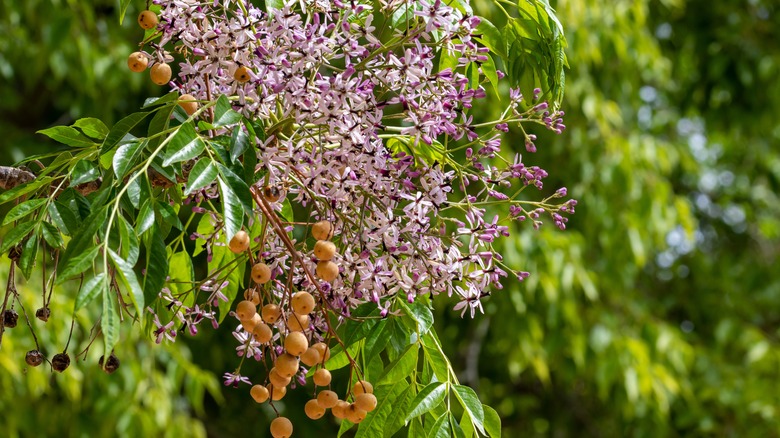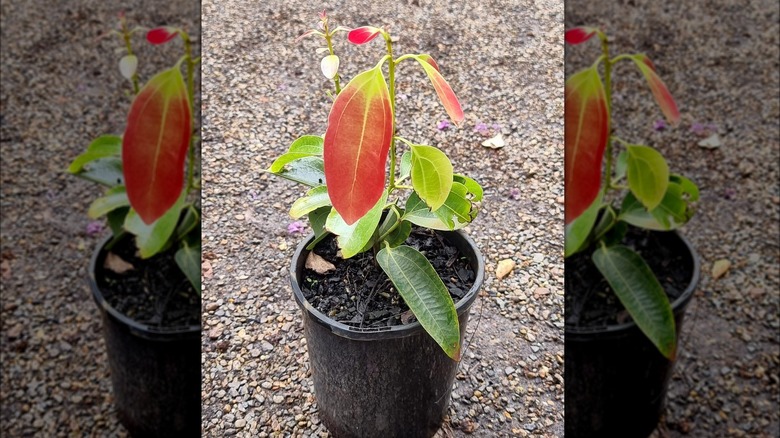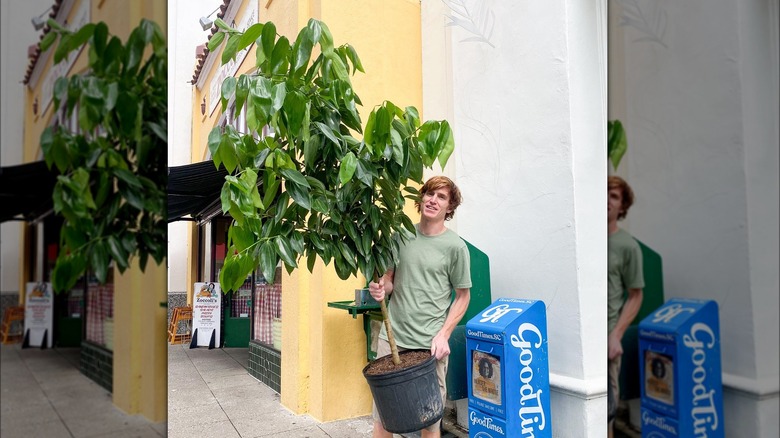How To Propagate Your Cinnamon Tree (& The Best Time To Do It)
Did you know that it is possible to grow a cinnamon tree (Cinnamomum spp.), even if you live in a colder climate? Whether you grow your tree indoors or outdoors, you can absolutely produce your own supply of warm cinnamon for spicing all your entrees, baked goods, and lattes. But, if you already have access to a cinnamon tree, you can also propagate your own by using cuttings from the original to create more of these spices for harvesting, decoration, selling, or gifting to your favorite friends and family members.
Whether you've been growing cinnamon for years or are just considering starting the journey of planting your first tree, going a step further and propagating your cinnamon tree can be a very exciting prospect. The process of taking and planting cuttings from these trees is quick, easy, harmless, and has a pretty high chance of succeeding — as long as you keep in mind that the best time for transplanting is in spring or autumn, and these stoic trees can take months to grow roots.
Seeing double: how to grow a new cinnamon tree from a cutting
Once you've decided that you'd like to try propagating your cinnamon tree, the process is quite simple. First, you'll need to consider your timing, especially if you plan to transplant your new cinnamon tree to an outdoor home. Cinnamon trees can take around 45 to 60 days to fully form roots. Since these trees do best when planted in the spring or early fall, you'll want to choose your preferred season of the year and make sure you give your cuttings plenty of time to grow before your desired transplant date. If you'd like to transplant your sapling in October, for instance, you should start propagating by August.
When you've planned out the ideal timing, simply select a healthy green branch of your cinnamon tree that is about a foot long and carefully cut a section of it off (cut near a node, or where the leaves meet stem, to propagate your plants like a pro). Remove leaves toward the bottom, sparing one or two leaves remaining at the top of the cutting. Then, plant the cutting in a container of moist, sandy soil and place it near a sunny window. Keep the soil consistently moist (but not waterlogged) and begin to gently check for roots by carefully inserting a finger into the soil and slightly lifting the cutting occasionally after a few weeks.
Transplanting and caring for your new cinnamon tree
If you grew your original cinnamon tree yourself, you likely have a good idea of how to care for one. However, if you bought or were gifted your first tree already fully grown (or it already existed on your property), you may need some guidance on how to transplant and care for your new sapling. Once your cutting has established a root ball and begun to grow new leaves and branches, it is ready to be transplanted.
Those who happen to live in USDA hardiness zones 9 through 11 can transplant their cinnamon tree sapling directly into the ground. Simply dig a 1-foot by 1-foot hole in a spot that receives an abundance of full sunlight and carefully cover the root ball with loose, sandy soil, slow-release fertilizer, and a layer of mulch. If you don't live in a tropical or subtropical region, you'll need to transplant your sapling into a larger indoor pot (around 24 by 20 inches) instead of the ground, but the process is otherwise the same. Water your tree — whether indoors or outdoors — whenever the top few inches of soil feel dry and mist indoor trees regularly. In two to three years, you'll be ready to harvest cinnamon from your tree by peeling away its delicious bark.


